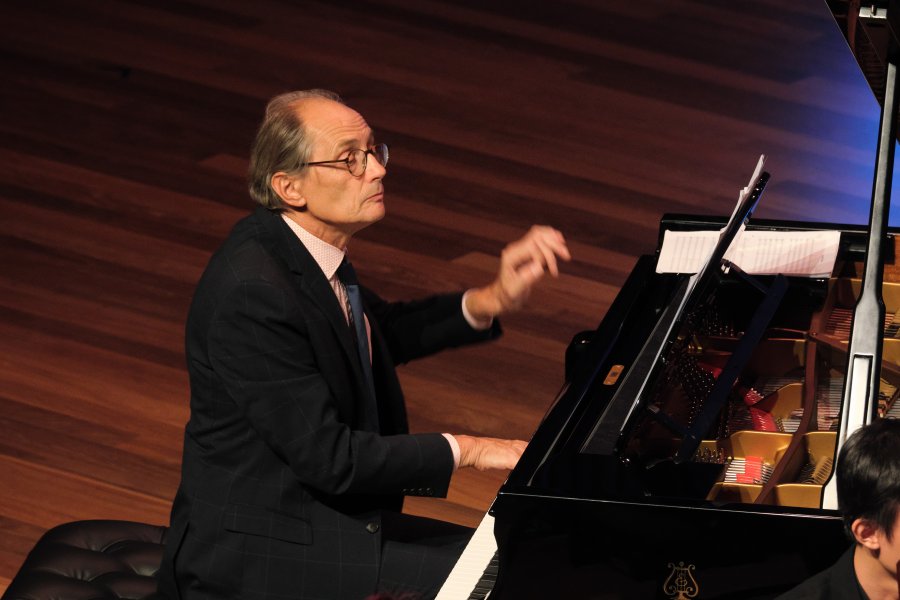
Music / “Madama Butterfly”, Handa Opera. Sydney Harbour, until April 23. reviewed by HELEN MUSA.
THIS revival of Àlex Ollé’s 2014 production for Handa Opera is ultimately saved by the glorious singing and the inspired conducting by Brian Castles-Onion of what many believe to be Puccini’s greatest music.
Revival director, Susana Gómez, has in no way dealt with the essential problem of this production, where an intimate domestic drama is played out on a football stadium-sized arena.
This means that the soaring love duet between Pinkerton and Cio Cio San (Butterfly) in Act I is all but lost in the wide-open spaces and follows a great deal of business in getting the wedding guests out and up over the hill.
During interval, machinery was used to construct Butterfly’s little house on the hill overlooking Nagasaki harbour, but in this version the cottage is surrounded by properties purportedly belonging to “Pinkerton Constructions,” suggesting that the errant naval officer who has deserted his Japanese child-bride has now become a developer, something the libretto does not hint at.
Another update is seen in Lluc Castells’ eclectic hodgepodge of costumes, with Butterfly herself wearing an American T-shirt and runners as she prepares for her “honourable” suicide.
Such glib bits of modernising immediately raise the question of why Social Security hasn’t been called in to check on what’s happening in the Butterfly household as its members approach starvation.
It is no secret that contemporary critics of “Madama Butterfly” have put a nasty slant on the story of a 15-year-old girl effectively “bought” by an American naval officer, and the updating does not allow the excuse that “it’s the way it was”.
Such a large space gives little scope for singers to portray subtle conflicts of emotions, but Karah Son turns in a delightful performance in the nearest moment to comedy where she taunts her lovesick suitor, the Yamadori.
Diego Torre, cast against type, makes a good job of showing the egotistical self-indulgent side of Pinkerton so that towards the end when he sings, “poor me,” the cries of derision from the audience were audible. In a final heroic effort, Torre is obliged to run the full length of the football field to get to the dying (by the time he gets there, dead) Butterfly, who is inexplicably hidden behind a screen until he brings her onstage.
The portrayal by Michael Honeyman of Sharpless, the US Consul in Act III, where he sings to Pinkerton of how he had warned him about his actions is one of the most powerful operatic moments I have seen in a long time.
Opera Australia has pulled all the stops out to make it a spectacle to behold, especially with an enormous sun and moon designed by Alfons Flores, fireworks suggesting a voluptuous but short-lived wedding night, and a peculiar bunch of refugees dragging their bags across the front of Butterfly’s house between Acts II and III while singing the “Humming Chorus”.
The glories of “Madama Butterfly are in its famous areas and duets,” which rise above place and time to express the universal pain of love. Apart from the usual crowd of influencers who left at interval, (former PMs Malcolm Turnbull and scott Morrison saw it out) audience members visibly enjoyed a starry, starry night of opera and were heard singing the tunes as they left.
Who can be trusted?
In a world of spin and confusion, there’s never been a more important time to support independent journalism in Canberra.
If you trust our work online and want to enforce the power of independent voices, I invite you to make a small contribution.
Every dollar of support is invested back into our journalism to help keep citynews.com.au strong and free.
Thank you,
Ian Meikle, editor




Leave a Reply